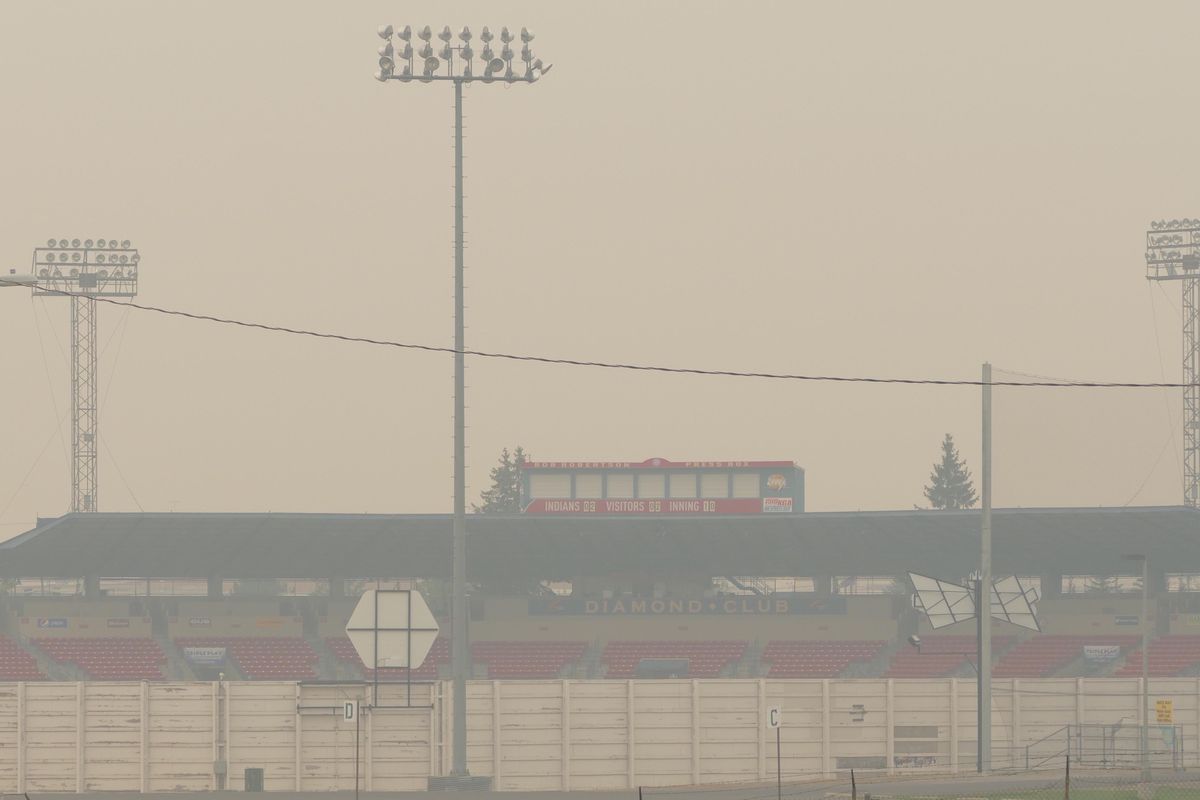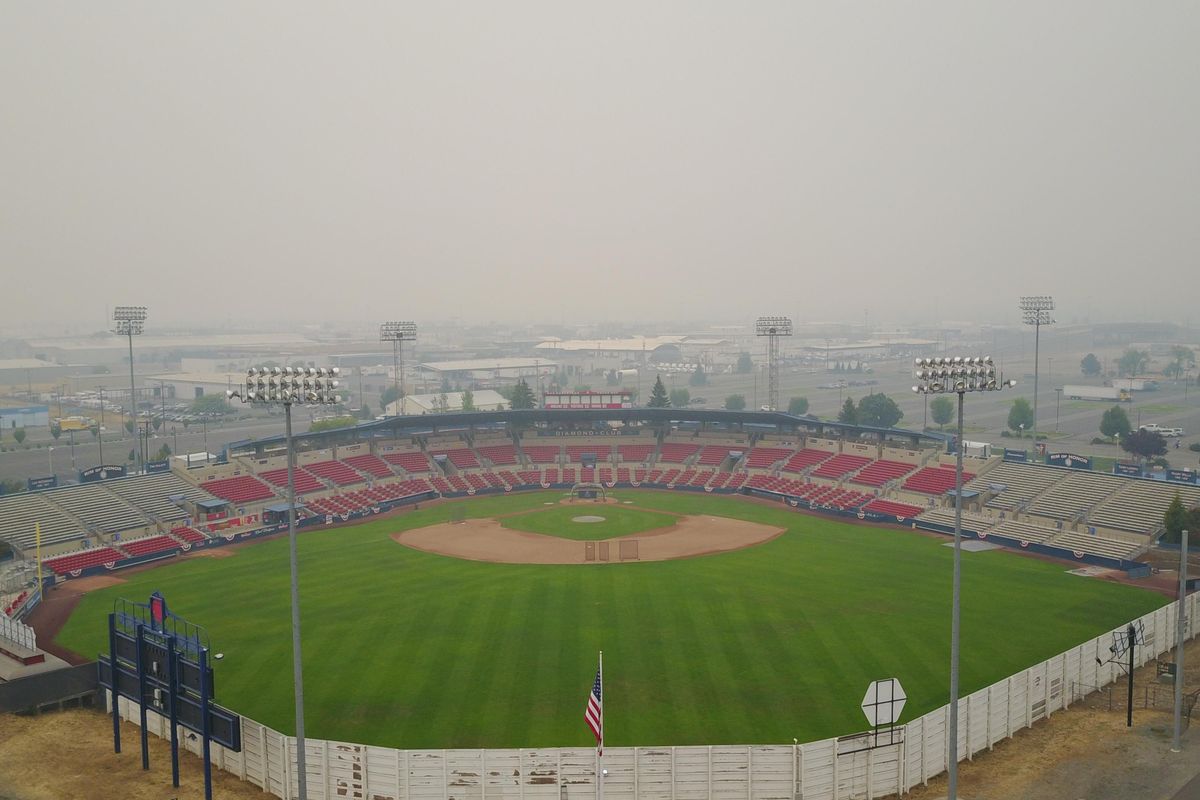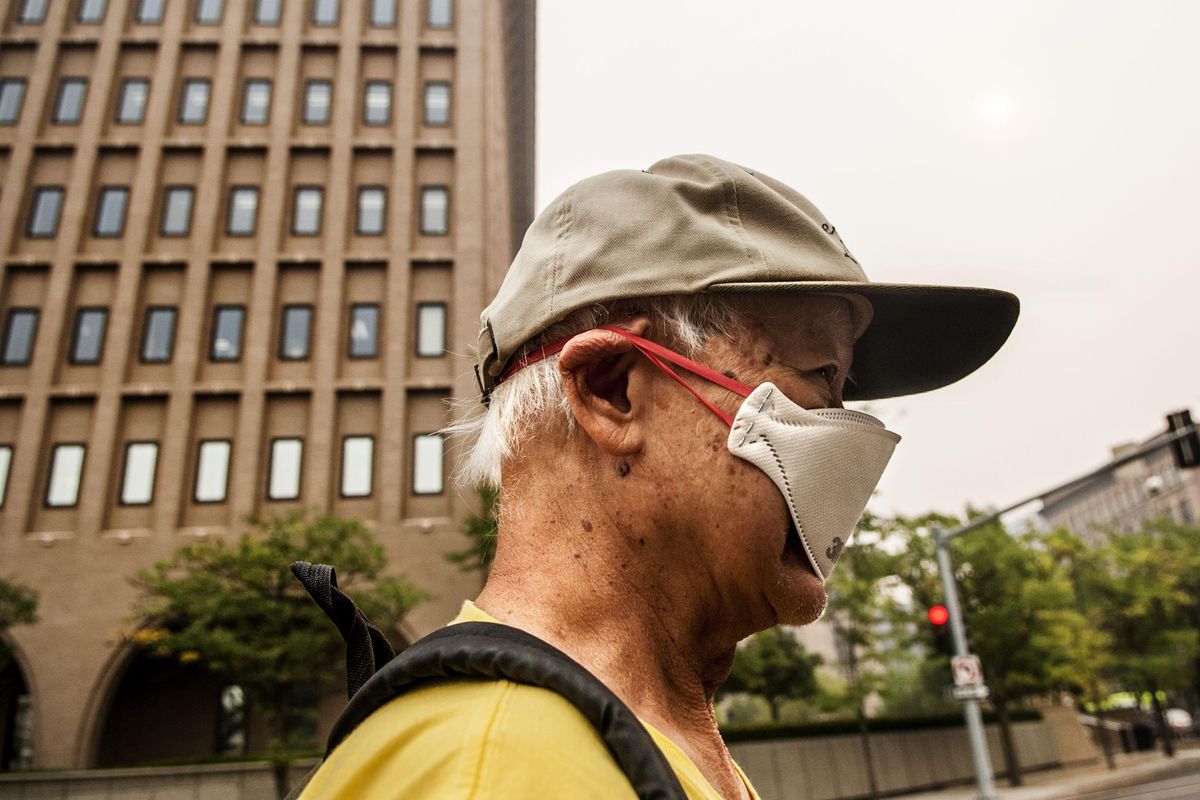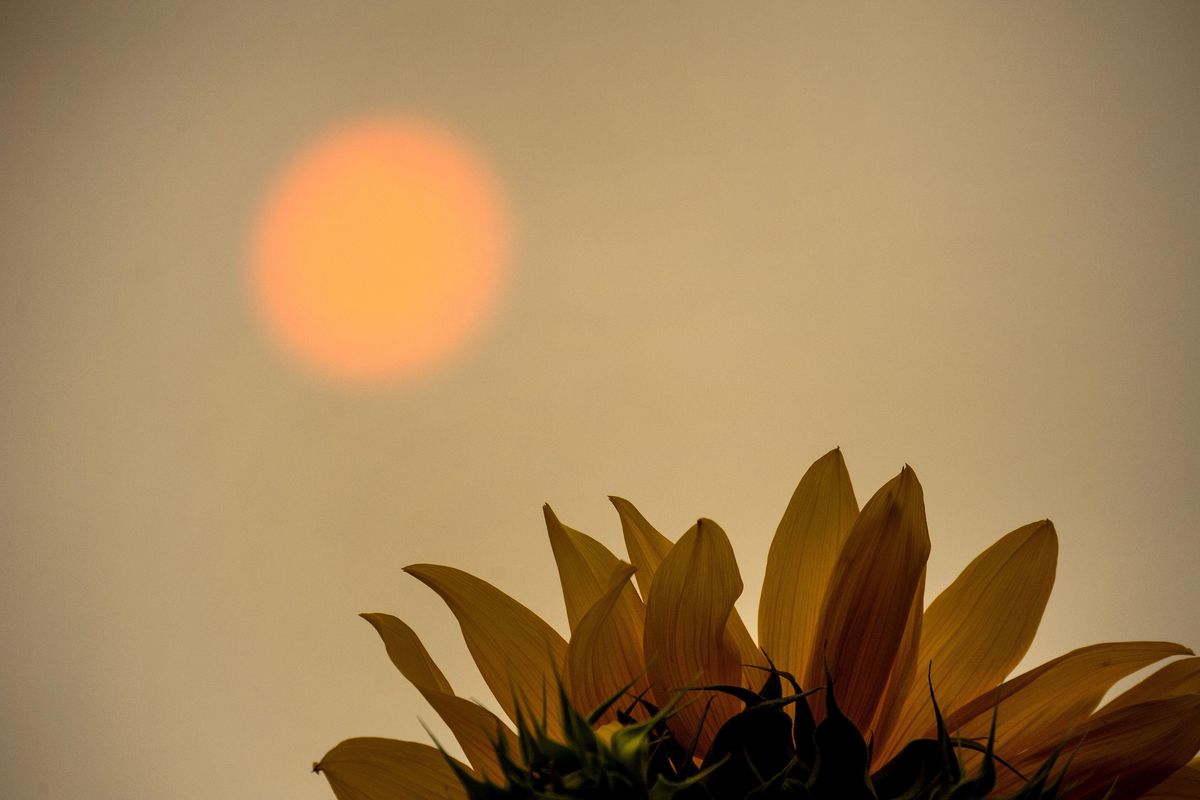Tuesday morning air quality levels remain hazardous in Spokane region
"I can stay indoors or I can wear a mask," said Bill Leong as he took his daily walk around a smoke filled Spokane on Tuesday, Sept. 5, 2017. (Kathy Plonka / The Spokesman-Review)Buy a print of this photo
Air quality in Spokane remained “hazardous” overnight.
The air quality index at 4 a.m. Tuesday was above 300 at the five working air monitors that measure particulate matter in Spokane County, according to the Washington Department of Ecology.
Readings above 200 in the 1-500 scale are extremely rare in Spokane.
The Spokane Regional Clean Agency reported that the monitors were at “very unhealthy” as of 1:45 p.m. The agency’s readings are updated each hour, and are weighted more heavily for the last four hours. Numbers reported by the Department of Ecology are real-time.
Department of Ecology readings also showed “hazardous” air quality in Pullman, Rosalia and Newport.
Respite from the wildfire smoke blanketing the area isn’t expected to come until Thursday or Friday at the earliest, said Ron Miller, a National Weather Service meteorologist in Spokane. Until then, Miller said air quality will hover around the “unhealthy” to “hazardous” categories until winds shift, and wildfire smoke from Montana and British Columbia are no longer pushed into the Inland Northwest.

“We might start to see some noticeable improvement Thursday, but Friday will definitely improve,” he said. “I’m not going to say we’ll have clear blue skies on Friday, but it will improve.”
In 2015, the area experienced one of its worst summers in terms of air quality, when readings reached 309 on the air quality scale, according to numbers captured by the weather service. Miller said this week is comparable, if not more severe.
“This is all compliments of Montana,” he said.
Air quality readings began reaching the hazardous category on Monday. Hazardous is the worst reading on the scale. Numbers above 150 are considered “unhealthy” for all.
In Idaho, hazardous readings were recorded at 7 a.m. at Kellogg, Plummer, Potlatch, Juliaetta and St. Maries, according to the Idaho Department of Environmental Quality.
Monitors at Rathdrum, Sandpoint, Moscow and Bonners Ferry showed air quality in the “very unhealthy” category.
The weather service predicts temperatures this week to hover around the high 80s to lower 90s. Miller said the smoke is keeping temperatures lower than they would be normally, but by the weekend and as smoke clears, temperatures could rise.
Miller recommended keeping windows closed during the day, and covering AC units at night to keep smoke from entering people’s homes.
The long-term impact of “hazardous” air is a little unclear, said Dr. Bob Lutz, the Spokane Regional Health District’s health officer.
“We don’t know necessarily (the) long term impacts right now,” he said.
There is some evidence that “you can incur long-term lung damage from persistent and I emphasize persistent exposure to poor air quality,” he said.
But, assuming the smoke clears by the end of the week that wouldn’t be a problem. Instead, people who already have existing respiratory issues may be severely impacted. But the “average Jane and Joe” won’t.
That being said, children, who breath more rapidly than adults are at a greater risk, as are senior citizens.
“Every breath in is another breath in of the junk you’re wanting to avoid,” he said.
He encouraged people to “be smart.”
“Minimize your time outdoors,” he said. “If you have to be outdoors limit it as much as you can.”
According to the World Health Organization outdoor air pollution causes 3 million deaths worldwide annually. In 2012, indoor and outdoor air pollution contributed to roughly 6.5 million deaths.
























